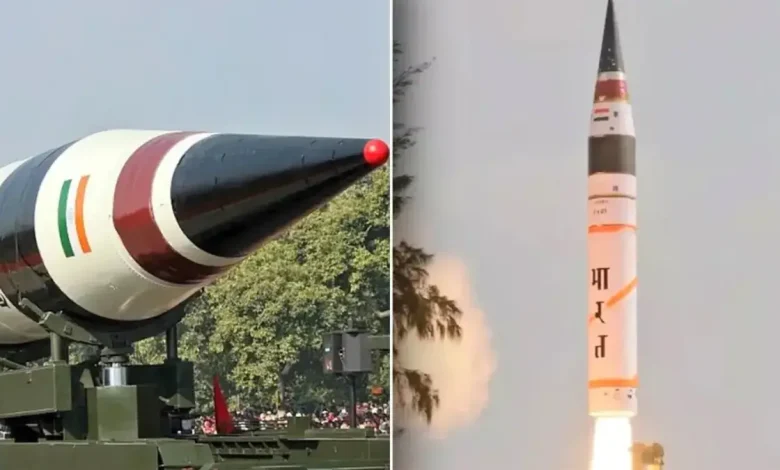India test-fires Agni-5 intercontinental ballistic missile: Key takeaways

India on Wednesday successfully conducted a test of the Agni-5 intercontinental ballistic missile, marking a significant step forward in the country’s strategic capabilities. The Defence Research and Development Organisation (DRDO) said the mission validated the missile’s range, precision, and reliability, reinforcing India’s deterrence posture.
What is Agni-5?
Agni-5 is an intercontinental ballistic missile (ICBM) with a range exceeding 5,000km. It is nuclear-capable and designed for high-accuracy strikes, enhancing India’s long-range strategic reach.
Launch details
The missile was fired from a mobile launcher in Odisha and hit a designated target area in the Bay of Bengal. According to DRDO assessments, the approximately 20-minute flight under diverse conditions confirmed the system’s robustness.
Agni-5 is engineered to carry multiple independently targetable re-entry vehicles (MIRVs), enabling a single missile to engage several targets. This demonstrates India’s advancing expertise in complex missile technologies.
Why it matters
With its extensive range, Agni-5 broadens India’s coverage and strengthens second-strike credibility, a point frequently underscored by defence analysts when assessing its strategic value.
Advanced systems onboard
The missile incorporates upgraded rocket motors, refined navigation and guidance, and features intended to lower detection probability. Its MIRV configuration allows one launch to deliver warheads to different targets.
Part of a growing arsenal
Agni-5 complements systems such as Agni-4 and the Prithvi series within India’s missile inventory. Regular trials and iterative upgrades signal an ongoing effort to maintain a modern and credible deterrent.




